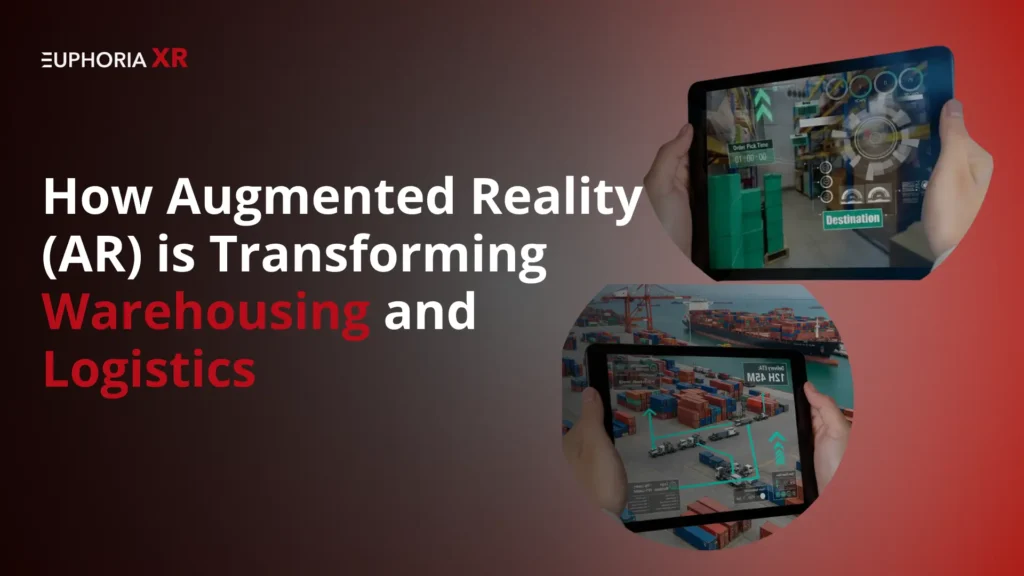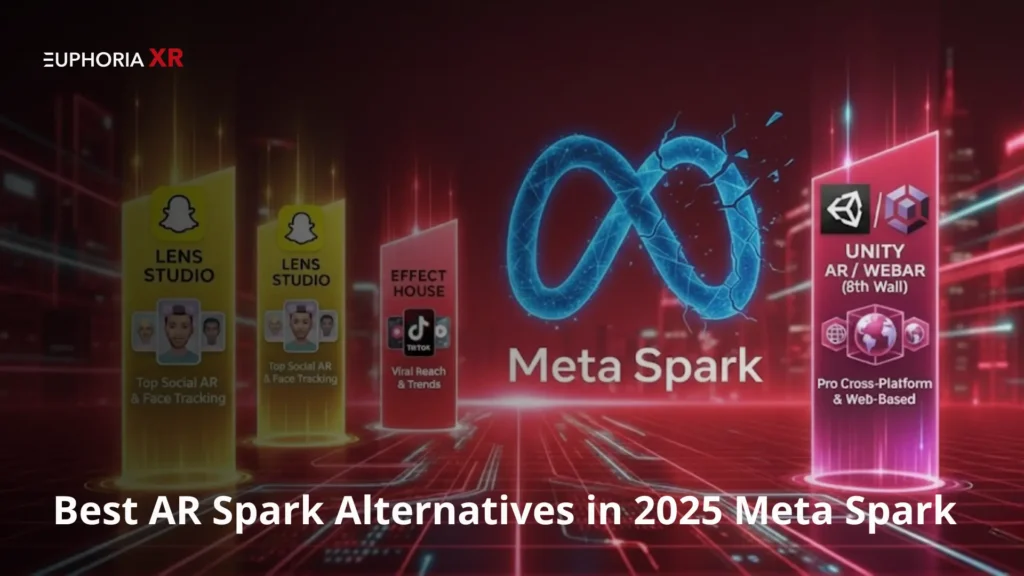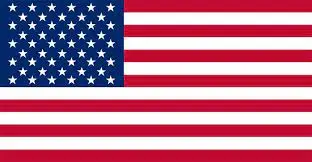Are there moments when you feel like your marketing is not making the desired impact?
Well, you are not alone.
In this fast-paced world, the attention span of humankind is shorter than ever– in an attempt to convince us, Microsoft once did a survey that found an average attention span: 8 seconds- any ad that threatens to be anything less than engaging is doomed: advertisements are invariably skipped, muted, or otherwise forgotten.
This is becoming increasingly troubling on a near-daily basis with ordinary videos, images, and text trying to pull your brand message through the thick noise.
Think that’s where Virtual Reality in marketing and advertising stands, one-twenty over ordinary marketing? It doesn’t just tell the people about one’s branding, but invites them into the story.
It takes marketing from a spectator sport to an immersive experience.
Imagine if your audience could walk through your store, test your product, or feel your brand’s story, wherever they might be.
That’s not just innovation; that’s engagement at a different level.
So, if you are tired of creating ads that are ignored and want to build experiences people remember and talk about,
Let’s jump into the main points of why Virtual Reality(VR) in Marketing & Advertising is the way to be smart and why now is the time to care.
Ready to Hire VR Developer and dive into immersive solutions? Let’s build the future of virtual reality together!
What is Virtual Reality (VR)?
The Virtual Reality (VR) technology generates synthetic environments that users can explore via diverse interfaces as though physically present in that space.
With VR, you take in appearances and sounds that extend across 360 degrees, and touch-based feedback may also be present.
Customers experience this as if entering a game environment that duplicates actual urban sites and planetary locations.
A headset combined with possible hand controllers enables users to navigate the environment while viewing from all directions and interact with objects seamlessly.
The use of VR by businesses enables these organizations to provide brand experiences beyond traditional reading or video consumption methods.
How VR is Impacting the Advertising Industry
There has been a new trend of Virtual Reality advertising in recent years, and brands are going to have a new angle to look at.
Instead of merely showing customers how their products look, VR makes them feel it.
It makes the most boring promotions into thrilling journeys, attaches an emotional bond even faster, and retains attention longer than any traditional commercials.
A study results, ARtillery Intelligence indexed, say people are 30% more engaged, in comparison to static advertisements, with immersive ads (VR and AR).
Now it is hard to ignore the jumping of brands into action.
This is the revolution that VR has brought into advertising today:
Try-Before-You-Buy Campaigns
Virtual reality technology enables customers to explore vehicles, houses, and garments through digital experiences that bypass physical locations.
Two major brands, including Volvo and Thomas Cook, employed virtual reality to enable customers to engage with products in real-world ways before purchasing.
By minimizing consumer doubts, the level of trust between buyer and seller is enhanced.
PwC conducted research that demonstrated that VR Training, alongside experience,s connects users emotionally at four times higher rates compared to traditional learning techniques.
Branded AR Filters and Virtual Rooms
Social media apps like Instagram and Snapchat launched amusing filters, which brands now apply to build brief marketing engagements.
Gucci, along with Dior, joins other retailers in launching virtual and augmented reality spaces to let customers experience products through digital product displays and virtual fitting experiences that include online purchases directly from the digital environment.
Online conversions receive a boost as brands maintain their creative, interactive, and memorable approach through this platform.
Experiential Storytelling with VR
There can be no more power than that of storytelling within virtual reality.
Of course, storytelling is powerful. But storytelling within virtual reality? That’s unforgettable.
VR technologies enabled The New York Times to tell compelling stories about war refugees through “The Displaced” project.
As spectators, they experienced what refugees experienced because virtual reality exposed them to refugee camps and flooded streets just like refugees.
Experiential storytelling strengthens brand-personality bonds, which generate lasting customer relationships and increase customer value across their life cycle.
Are you ready to breathe life into your brand with immersive experiences? Together, let us create something unforgettable.
The Uses of VR Across Industries
VR applications stretch far beyond their use in the gaming field.
Virtual Reality (VR) continues to expand through different industries, which enables marketers to develop innovative audience engagement methods worldwide.
Virtual Reality currently impacts the world at the following points:
VR Marketing in Real Estate
Consumer purchases of houses usually bring significant stress into people’s lives.
Virtual Reality enables home and apartment potential purchasers to experience virtual walkthroughs from any location worldwide.
Real estate prospects can utilize Matterport alongside Sotheby’s International Realty to engage with complete 3D house walkthroughs through which they can freely examine properties while taking precise measurements and experiencing the space as if they were physically there.
VR technology helps expedite customer purchasing decisions, alongside boosting their confidence in the purchasing process.
Virtual Reality (VR) Marketing & Retail
With virtual reality technology, retailers enable their customers to virtually perform clothing tests, footwear trials, and cosmetic product applications without the need to enter physical locations.
L’Oréal helps customers virtually daily makeup through their Makeup Genius mobile app, which eliminates the need for trying samples and cleanup.
The IKEA Place application enables customers to preview furniture options in their domestic rooms before purchasing.
Accenture reports that customers who interact with 3D or AR/VR content experience conversion rate hikes up to 250%.
Related Article: https://euphoriaxr.com/virtual-reality-in-retail/
VR Marketing in Tourism
The pictures displayed by travel companies are insufficient alone to persuade customers.
The virtual reality technology enables travel companies to guide their customers through vacation simulations that depict beaches, hotels, and city sights before purchase.
Thomas Cook, through their “Try Before You Fly” VR marketing campaign, presented promotional vacation destinations to buyers as full 360-degree panoramic views, which created a 190% surge in bookings.
How You Can Use VR in Your Marketing Strategy
Marketing and advertising professionals who wish to implement Virtual Reality (VR) need to understand the right implementation strategies for their brand.
The requirement for technological expertise does not exist here.
All you require is a basic and intelligent approach.
This complete demonstration requires a step-by-step approach:
Understanding Your Audience
You must understand your target audience before beginning any creation process.
Early adopters who enjoy technological innovations make up their audience base.
Users belong to either early adopters who enjoy tech or first-time users who experience nervousness during VR encounters.
Pro Tip:
The GlobalWebIndex survey shows 74% of Generation Z and Millennials regard virtual reality offers as exciting, but older generations seek directed experiences and straightforward interactions for VR.
Your audience requirements influence every decision, starting from plot development through platform selection and moving toward complexity decisions and design choices.
Developing Engaging VR Content
The most effective VR marketing avoids any sort of advertisement feel.
It is synonymous with an adventure.
Think of ways in which you can:
Solve a real problem.
Assist individuals in forming visions of superior life versions.
Create tales that users can enter.
Example:
IKEA delivered a VR application that enables customers to virtually place furniture inside their actual living spaces instead of merely showing photos.
Tip:
During VR development, focus on creating simple yet interactive content that delivers meaningful value instead of creating excessive flash without purpose.
Choosing the Right VR Technology
To create virtual reality content, you do not require a full Hollywood studio infrastructure.
VR technology exists at different levels based on your funding needs and project targets.
Users can view basic 360° videos through their smartphone devices in a format that delivers affordability with broad reach potential.
The Oculus Quest represents standalone VR gear that lets users experience total virtual reality while staying independent from PCs (this equipment combines average price points with strong user control).
The most advanced VR platform with body-sensitive technologies operates as a significant financial investment but delivers astonishing results when required.
All you need to choose from is a VR solution that suits your audience numbers and campaign scope, rather than lavish equipment.
Marketing and Promotion of VR Campaigns
It’s only half the job in creating a stunning VR experience.
The other half comprises telling the world about it.
In case you don’t promote your VR campaign, even the coolest experience will go unseen.
Here are some ways to do the talking:
Social Media: Upload some teasers and sneak peeks.
Collaborate with Influencers to show how it affects them.
Send pre-invites to valued consumers or email subscribers.
Construct a timer and a mini-dare to generate some excitement.
Free Offer Trials or Experiences during Launch Week.
Research Tip:
Campaigns combining immersive VR experiences and social media promotions can drive at most about 47% more within an audience, as per Statista.
Now see: Hype is important; build it some time before launch!
Launching Your VR Campaign
The launch day should not feel like another announcement but like a party.
Here are ways to make it special:
Live demo (in-store, online, or both).
An award for the First 100 U/C Editors.
Invite the write journalists or bloggers to attend the launch event of your VR product.
Pro Tip:
Make sure you time your launch for the time when your desired audience is most active-such as weekends, evenings, or holidays.
Also, make it easier for people to share on social media their experiences with the event: Pure gold generated through user contributions!
Post-Launch Analysis and Feedback
True experiential learning begins post-finalization of the VR campaign.
The following should be monitored:
Durations for which users stayed within the VR experience.
Which areas did they seem to love or tend toward skipping?
Did users run through the whole experience?
What are their reviews (comments, messages)?
Then add simple questions using quick polls, direct messages, or emails:
“What was your favorite part?”
“Is there anything that confused you?”
“Would you recommend it to a friend?”
Active post-campaign feedback collection and action by brands typically results in as much as a 26% increase in customer retention (HubSpot).
Learning what works (and what doesn’t) makes you stronger with each campaign.
Are you interested in seeing the changes Virtual Reality can bring to marketing? Talk and explore the possibilities with our experts.
Key Considerations for Effective VR Marketing
Before rushing in to create a VR world, consider the following important tips:
Keep It Simple: Anyone who has just entered the world of VR should find it simple enough to take in.
The Story Comes First: The interference must feel like an experience, not just a tech demo. Beginning, middle, end: succinct and compelling.
Design for All: Not every customer will own a VR headset. Just provide an easy 360-degree video alternative or a lightweight AR experience.
No Motion Sickness: Fast motions, shaky cameras, and jarring angles induce dizziness. Rather, design a smooth and steady experience.
Consider Privacy: Be cautious about collecting personal data in VR. Have the same respect for users’ personal information that you would on a website.
Following such basic guidelines will impart a feeling of polish, fun, and user-friendliness to any VR campaign.
Measuring Success
There are ways to measure great marketing, not guess.
This is how to tell if your campaign in VR is working:
Time Spent in the Experience: For how long have users remained in your VR world? More often than not, longer denotes one is more interested.
Interaction Rates: How frequently do users click, explore, or take part in actions performed in the VR experience?
Social Sharing and Comments: Do people talk about it? Share it with friends?
Sales and Conversions: Did the VR campaign lead to more bookings, sign-ups, or sales?
Customer Feedback: Are users saying they enjoyed the experience? Asking for more?
Case in point: The example of a 190% increase in real-world bookings due to the VR holiday offered by Thomas Cook provides convincing proof that such campaigns indeed sell and not merely for entertainment.
Relate all your VR successes to actual results like increased revenue growth or loyal customers, or even associated buzz about the brand.
16 Innovative Ways Virtual Reality VR is Reforming Advertising
Virtual Reality (VR) marketing applications extend beyond original features because they are reforming brand-personnel interactions in the marketing industry.
The next generation of advertising will take shape through 16 transformative functions of Virtual Reality, which include:
AI-Powered Brand Ambassadors in the Metaverse
Virtual business stores feature artificial intelligence representatives that deliver precise recommendations to their customers. Virtual shopping experiences inside VR worlds get tailored by AI-based virtual assistants, which direct you and propose recommendations throughout the process.
Dynamic Product Placement
Through VR, brands have the opportunity to embed products into experiences naturally instead of showing traditional visible advertisements. Robotically driving a virtual racing vehicle with a car dashboard featuring a brand product feels innocuous rather than artificial.
Subliminal Ads Based on Thoughts
Future advertising in virtual reality spaces might become invisible to users through brain-computer adaptations that learn and adjust based on personal mental responses.
First-Person Advertising Experiences
People no longer watch commercials because the main character role has been extended to them.
Through virtual reality, users give unique, powerful experiences as the brand functions as part of storytelling elements rather than commercial promotions.
Campaigns Aimed at Entertaining, Not Selling
Brands have discovered that entertaining customers remains much more effective than straightforward sales presentations. Entertaining gamified virtual reality experiences lead to customer loyalty before customers purchase because entertainment comes first.
Up-Close and Personal Product Experiences
Customers can examine every detail of a product by utilizing VR technology because it operates within their home environment. The process boosts consumer confidence, which results in lower product return rates.
Virtual Test Drives for Vehicles
The virtual reality test drive service provided by Volvo lets customers experience a vehicle’s performance directly from home, thus saving them time and sparking their interest.
How can government organizations use technology to enhance public safety?
VR training simulations like these are setting the standard.
Try-Before-You-Buy Virtual Stores
Customers can try out products such as clothing goods and electronic devices, along with furniture, through interactive virtual stores that promise both convenience and enjoyment when shopping online.
Teleportation of Customers into New Contexts
Virtual reality lets users teletransport automatically between different settings that include remote travel locations, digital fantasies, and urban centers that organically incorporate brand elements.
Emotionally Powerful Experiential Campaigns
Stories delivered through VR create intense emotional responses that include feelings of happiness, as well as understanding others and fond memories.
The study published by Harvard Business Review demonstrates that emotional marketing builds customer loyalty to triple its baseline.
Fully Immersive Product Showrooms
Customers experience a showroom environment via VR instead of using traditional product pages since they can walk around stores naturally and see products in reality.
Hyper-Personalized Experiences
Customer data enables VR campaigns to generate personalized experiences for each individual user so they experience being really observed and listened to, and deeply comprehended.
Tailor-Made Ads for Each Individual
Individual advertising content transforms automatically whenever new visitors enter VR spaces because the platform modifies products as well as messaging for every visitor.
Virtual E-Commerce Storefronts
Through VR technology, virtual customers can experience a massive shopping plaza featuring virtual store visits along with shopping abilities that let them order products directly from their home seating area.
Branded VR Escape Rooms for New Releases
Companies create branded VR escape rooms that use new movies, game releases, and product launches in theme-based adventures for players to experience.
Immersive B2B Product Demos
Business-to-business companies leverage virtual reality technology for live application demonstrations of substantial equipment and sophisticated applications, enabling their staff to finish transactions swifter and wiser.
Immersive Brand Experiences Using AR and VR
AR and VR technologies enable companies to develop interactive experiences that people actively desire to experience again and discuss with others, and share with their connections.
The current trend enables businesses to convert their marketing content into tangible XR experiences instead of passive viewing experiences.
Interactive Product Demos and Virtual Showrooms
Brands enable customer product testing through 3D features.
Customers have access to interactive virtual showrooms and can magnify items through Zoom as well as spin them around and perform physical interactions.
Example:
Through its Holoroom virtual reality platform, Lowe’s enables customers to design kitchen spaces that become a virtual reality experience before purchasing.
In-Store AR Experiences and Gamified Marketing
Using their phones, consumers can activate various AR games and visual effects that operate within retail spaces.
Example:
Sephora provides an AR app that enables customers to test makeup products digitally without needing either test samples or creating any mess.
Brands conduct AR treasure hunts throughout their stores, enabling customers to receive tangible benefits from digital discoveries.
Storytelling Using Virtual Simulations
VR enables brands to produce immersive story experiences that people can physically experience.
Example:
Through its VR experience “A Walk in Their Shoes,” TOMS allows customers to virtually experience life in Peru, which is the destination for their shoe donations.
Through this approach, consumers formed emotional connections with how the brand distributed its purpose.
User-Generated Content in AR/VR Campaigns
People who develop an affection for an experience will naturally convey it to others.
Smart brands allow their audience to generate and spread their own AR/VR content, which multiplies reach automatically.
Example:
The Roblox game Gucci Town lets players visit branded locations to design virtual avatars while spreading the gameplay experience, which enables users to serve as brand marketers.
Partner with the best Virtual Reality Development Company to create powerful, interactive campaigns your audience will remember.
Virtual Reality Advertising Examples Across Industries
Virtual Reality (VR) in Marketing & Advertising is not just confined to big tech companies or luxury brands anymore; it is becoming the buzzword for even the most creative marketers of the industry. This is the truth: why it is so effective: it isn’t about showing a product-it’s about making you feel as though you’re in it.
Here are fantastic, practical illustrations of how some brands are using VR to tell stories, instill confidence, and drive sales:
Retail and E-commerce
TOMS – A Walk in Their Shoes
This heartfelt VR experience took users on a journey to Peru, where they could see how their shoes bought impact needy children. Turned social mission into an emotional connection – and it worked.
Vroom – Virtual Showroom
Vroom made it much easier to shop and buy cars, but also virtualized it by creating a digital showroom in which customers could tour used cars in a VR format, making the online-buying experience feel like they were visiting a dealership.
Gucci Town on Roblox
From Gucci, the brand transformed itself into a gaming company by forming an interactive space within the game. A user could now try paths on digital fashion, play branded games, and visit Gucci in a playful way that was non-salesy.
Entertainment and Media
Sony Pictures – Jumanji VR Experience
Sony adapted sequences from the film Jumanji into a more interactive jungle adventure that allowed fans to stroll through the movie and virtually explore it, making the promotions more memorable than mere trailers.
Doritos – Make Your Play
Doritos made a game world with VR flavor themes and allowed people to play, win, and enjoy it in an entertaining, ad-free environment.
Food and Beverage
Patrón – Virtual Hacienda Tour
Telling by doing, Patrón showed its craftsmanship through this 360° VR tour walking into the distillery in Mexico, with a behind-the-curtain view, building trust and luxury allure.
Pizza Hut – Newstalgia Campaign
Bringing back the nostalgia through the memories of red booths, arcade games, and other glorious moments from the ’90s, Newstalgia creates a sense between real and high-tech during current innovations by bringing AR and VR into life.
Automotive and Technology
Volvo – Virtual Test Drive
Volvo took potential buyers on a picturesque VR test drive in the XC90 without the need to visit a showroom. It allowed users to sample the characteristics of the car and its comfort from nearly anywhere.
OnePlus – AR Product Launch
While live events were termed postponed due to the pandemic, OnePlus launched their smartphone with augmented reality, allowing fans to explore the design and features of the phone while at home and in real time.
Fashion and Luxury
Christian Dior – AR Sneaker Try-On
With just an AR filter through the phone, a user would be able to “try on” the sneakers of their choosing-really a fashion in fun and at the same time cuts down on physical inventory trial.
Estee Lauder – Luxury Fragrance AR Experience
A journey through Estée Lauder’s sensory experience where users go through environments tied to fragrances, eventually helping them choose a scent that suits their personality.
Sports and Fitness
Invesco – QQQ Hoops Challenge
Invesco opened a new chapter in March Madness by introducing a VR basketball gaming platform. Sports fans may connect through it to their investment message in a manner quite unusual.
Healthcare and Wellness
Johnson & Johnson – Virtual Surgery Training
The consultancy turned to high-risk surgical procedures with J&J in virtual reality training for surgeons. The approach proved effective in improving retention of surgical skills, while making it clear that the technology was not for selling but for saving lives.
Real Estate and Architecture
Sotheby’s International Realty – Virtual Home Tours
Through VR, Sotheby’s enabled its most exclusive clients to tour properties all over the world without leaving home. The full tour could be done virtually without the hassle of travelling, which was especially handy when lockdown struck.
Education and Training
Walmart – Employee Training
More than a million Walmart employees practiced in virtual reality scenarios simulating busy sales days and grizzling customers through safe situations in virtual reality.
Google Expeditions – Virtual Field Trips
Through Google’s VR headsets, students would have the opportunity to see the world (and even space!) from a classroom, transforming them all into portals of immersive learning without ever leaving their desks of students.
Pros and Cons of Using VR for Marketing
Virtual Reality (VR) tools employed in Marketing & Advertising operations provide both major advantages and significant difficulties to users.
Let’s break it down simply:
Benefits of VR Marketing
Deeper Customer Engagement
When customers engage with VR content, they stay focused. The Stanford VHIL discovered that VR experiences lead to a 33% increase in memory recall, according to their research.
Emotional Storytelling
Through narrative-driven storytelling, brands generate sentiments that consumers can experience instead of viewing.
Stand Out from Competitors
The market contains only a small percentage of less than 1% companies that utilize immersive VR marketing practices. That’s your chance to lead.
Try-Before-You-Buy Confidence
The combination of product exploration and customer confidence enables your business to enhance trust and decrease product return rates.
Shareability & Buzz
Great VR campaigns spread like wildfire since people naturally want to share their encounters with innovative experiences.
Challenges of VR Marketing
High Production Costs
Mature professional VR experiences range in cost from $5000 to hundreds of thousands, depending on their level of complexity.
Limited Access
360-degree and AR versions for mobile devices should be provided since not all people own VR headsets.
Learning Curve
VR content needs to be completely user-friendly with natural controls because complex features can drive users away.
Tech & Talent Needs
Professional developers who combine with storytellers and designers must work together to achieve successful VR implementations because ad creatives are insufficient alone.
The Future of Virtual Reality (VR) in Marketing & Advertising
The future of marketing consists of immersive experiences combined with personalization features, and this transformation is happening under VR leadership. The combination of VR with AI and augmented reality, and blockchain will develop marketing systems that dynamically modify their approach based on individual consumers in the upcoming few years.
Mainstream acceptance of affordable hardware allows VR to leave behind its market borders where big-budget campaigns reigned. Immersion-oriented experiences through VR technology will allow small companies, along with educational organizations and local retail businesses, to achieve genuine marketing outcomes.
Your audience will be able to explore self-driven virtual spaces that you create instead of focusing only on campaign development.
Bringing Your Brand into the Future with EuphoriaXR
Every leader in their industry should recognize marketing as something that creates experiences instead of delivering mere messages.
EuphoriaXR assists brands in developing spectacular VR experiences that transcend traditional advertisement methods. The team uses strategists with developers and creative talent to bring big ideas into interactive virtual experiences that include product demos, branded gaming formats, and virtual shopping environments.
This isn’t just future-facing. The audience is searching for emotional connections and interaction, which form the core need of your marketing approach. Our team assists businesses that want to distinguish themselves through this transformational process.
Winding Up!
Virtual Reality stands as a concept that has moved beyond transient promotional significance in the marketing and advertising domains. Through VR, companies drive messages from their desired statements to the emotions their audience members seek. Organizations that adopt this innovative approach at the beginning will gain both market leadership and better stories alongside deepened customer relationships.
The requirement to commence efforts does not restrict you to being a technological titan. Having the appropriate vision alongside motivated personnel and enough bravery enables individuals to explore innovative solutions.
The world gives power to attention, so virtual reality delivers more than merely capturing attention. It earns it.
















